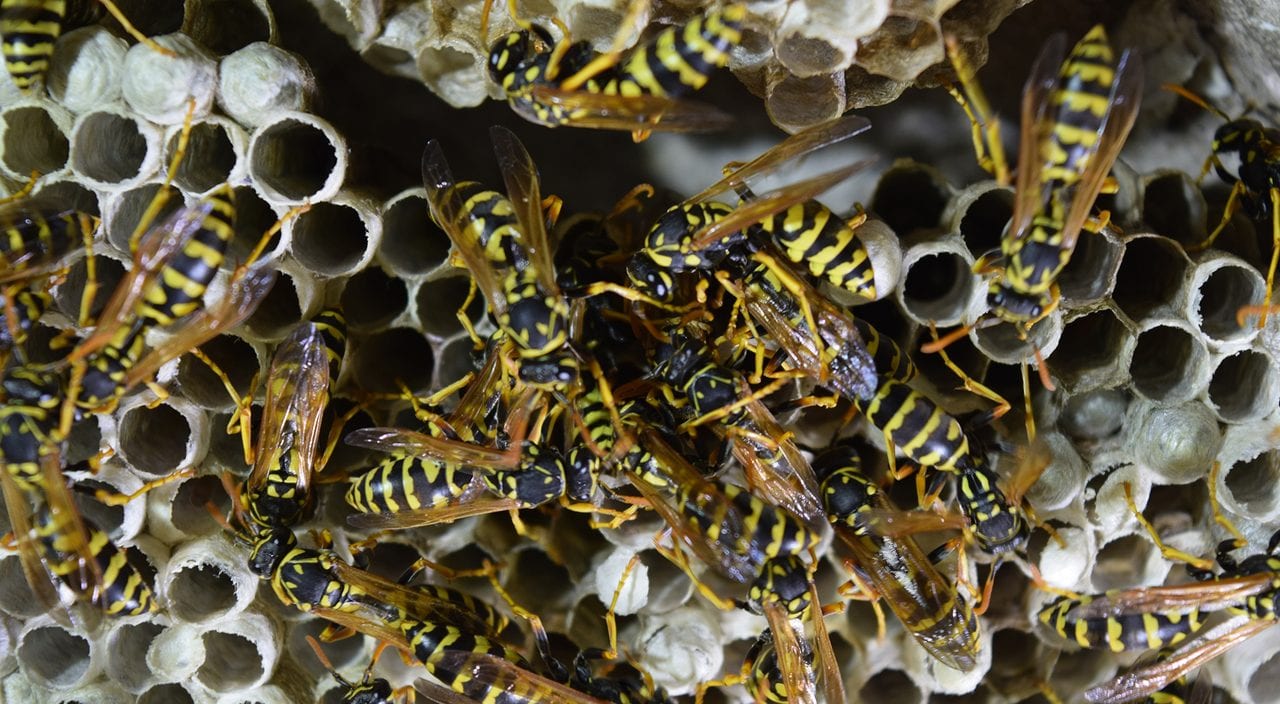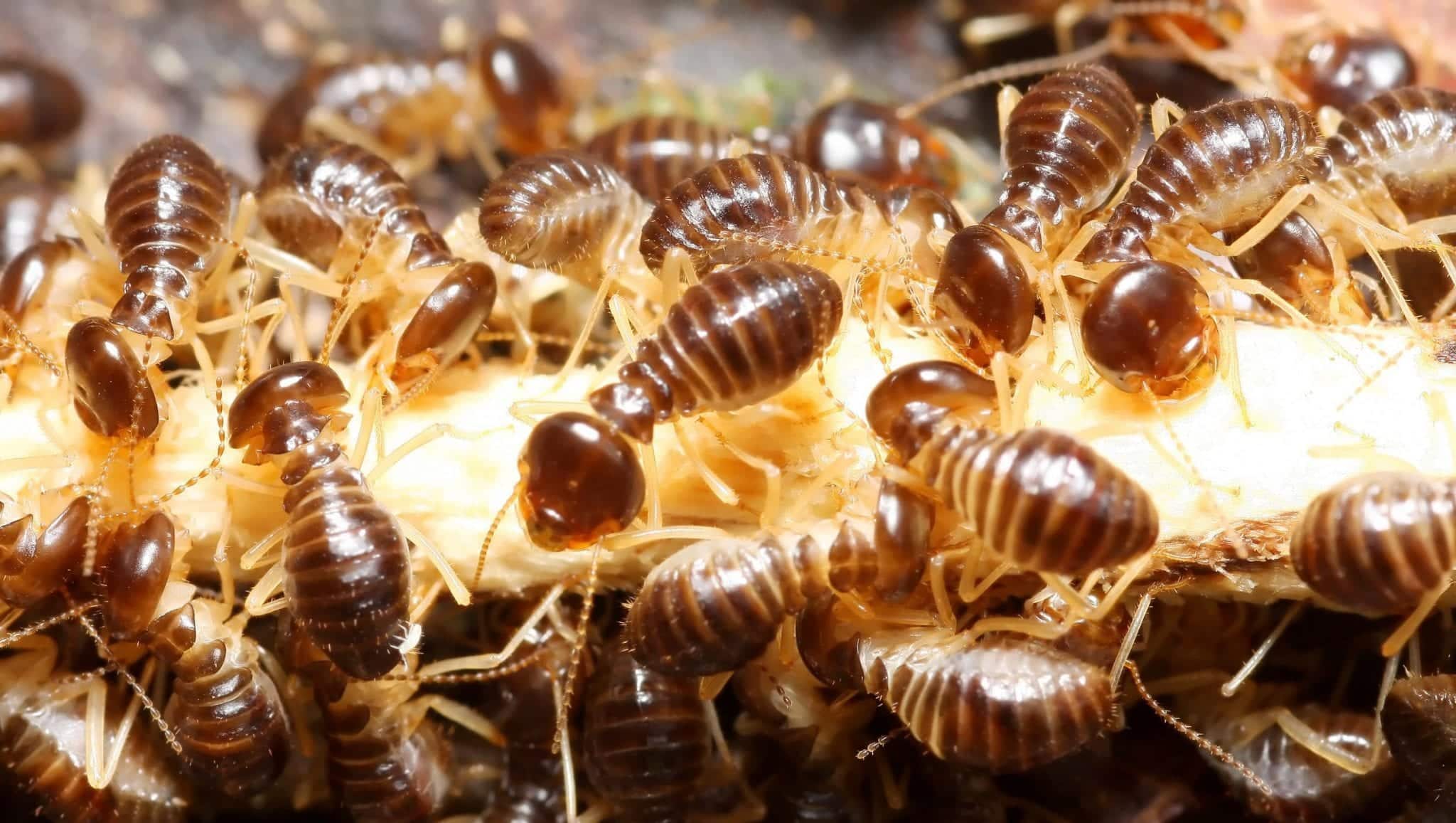Typically, homeowners install fencing to keep pets and children in, while also keeping critters and other pests out. While fences protect your lawn and home, remember to protect your fence too.
Pests like termites, boring beetles, and carpenter ants are commonly found in and around fences made of wood. Wood fences are no longer recommended by professionals, as wood posts can often become waterlogged, cracked, and are prone to pesky pests.
Even if you’ve installed a vinyl, chainlink, or wrought iron fence in your yard, there is still a possibility of pest infestation. There are a few different types of insects and animals that can pose potentially serious problems for the durability of your fence, regardless of the material it’s made of.
Common Wooden Fence Pests
Wood fences used to be all the rage, but that has changed over recent years. While wood is usually considered durable (depending on the type), wooden fence posts are prone to many different issues, especially pest infestation.
There are more pests commonly found in wood fencing than any other type of fencing. Wood fencing is no longer recommended for homeowners to install, especially with all of the other fencing material options out there.
Termites
When it comes to wood fencing, the most commonly thought of pest is surely termites. These small, brown, winged insects burrow tunnels to create colonies inside of wood. There are two types of termites that can create issues for homeowners.
- Dry wood termites are exactly what they sound like – termites that feed on dry wood. From the outside, an infestation of dry wood termites may not be apparent. By applying pressure on a wood post, a termite colony may reveal itself. The wood will crumble away to reveal a pit full of sawdust created by termites.
- Subterranean termites are another species of wood-eating termites. However, these termites enjoy feasting on wet wood. Instead of being found inside a fence post, these creatures are commonly found in nests around the base of fence posts, near the moist soil.
Carpenter Ants
Carpenter ants are another commonly found pest. Similar in coloration and body structure, carpenter ants are often mistaken for termites. They love wood just like termites too, however, they utilize the wood in a different way.
Carpenter ants don’t feed on wood, they just burrow deep inside of it. The signature sign of a carpenter ant infestation is piles of fine sawdust at the base of fence posts.
Wood-Boring Beetles
Another issue faced by wood fence owners is wood-boring beetles. There are a few different species of beetles, such as the powder post beetle, ash borer, and pine bark beetles, that can pose a significant threat to the structure of a fence.
These types of beetles bore holes into wood to lay their eggs. It is actually the larvae that hatch inside the wood that create the most serious risk. Powder post beetle infestations can be identified by the fine white powder left near nests.
Carpenter Bees and Horntail Wasps
One of the less damaging pest threats is that of carpenter bees. These flying insects look similar to a regular bumblebee, except they bore deep holes in wood fence posts. Horntail wasps do the same, using their large, wasp-like tail ends to bore deep holes in softwood.
While the bees and hornets themselves are not dangerous, and the holes don’t necessarily cause seriously damage themselves, the openings can lead way to structural damage from water intrusion and fungus.
Mold, Moss, Lichen, and Fungi
Perhaps not a pest in the traditional sense, mold, moss, lichen, and fungi infestations can still be just as serious as a termite or ant infestation. When wood fence posts crack or have holes bored into them by insects, this invites in water and moisture. Moist environments are where mold, fungus, and mosses thrive best. This is why it’s so important to fill in holes caused by carpenter bees and eliminate other pest infestations right away.

Common Vinyl, Chainlink, and Wrought Iron Fence Pests
While vinyl, chainlink, and wrought iron fencing are much better options than wood fencing, they are still not completely immune to the wrath of common pests. Though the wood-boring pests like termites, ants, beetles, and certain bees can’t make a home within these materials, other issues can still arise.
Hornets and Bees
Fortunately, bees and hornets that create holes in wood will not take a liking to a vinyl fence. However, other species may be tempted to use the stable vinyl fence posts to attach a hive or honeycomb. Additionally, if there are cracks or breakage in the PVC of vinyl fences, these pests can build their homes in the hollow posts. They can do the same on chain link and wrought iron posts and pickets as well.
Bee and wasp spray can be used to eliminate smaller infestations. Professional bee handlers should be called after a hive or honeycomb grows to an unmanageable or dangerous size.
Raccoons and Squirrels
No matter where you live, squirrels and raccoons are bound to be near. These little critters can create issues for vinyl fence owners due to their sheer weight. A big enough squirrel or raccoon can create dents, holes, or even break off pieces of vinyl fencing, leaving space for water or insects to get in.
It is difficult to pinpoint an exact solution to raccoon and squirrel issues, as they’re so prevalent throughout North America. However, if these pests become increasingly problematic, professional pest control or local animal control officers can be utilized.
Birds
Birds are another less threatening issue in yards with vinyl fences. Their droppings can become an annoying nuisance, especially on darker colored fences. Detracting from the beauty of the fencing, this issue can be quickly and easily remedied. Simply wash away droppings with a hose. For especially hard to clean spots, use a wet rag and soap to do the trick.
Pest Removal and Solutions
The very best solution for avoiding these aforementioned pest issues is to avoid wood fencing completely. The most common pest infestations are found within wood fence posts and pieces. Vinyl, chainlink, and wrought iron fencing options are always going to be the safest bet to protect your fence against pest infestation.
If your fence has been brought under attack by bees or hornets building nests, simply knock them down or spray them with wasp killer. If the situation is dangerous or the nest has gotten too large, call a professional to assist in the removal.
Additionally, regularly inspect your fence regardless of the material to ensure that there are no holes or cracks where moisture can linger. Pooling water can cause serious damage thanks to molds, funguses, and lichens.
Finally, simply hose down your fence or let the rain wash away any unwanted animal droppings or debris. By continuing to maintain your fence throughout the year, many of these pest infestations can be easily avoided and your yard will continue to look as beautiful as the day you installed your new fencing.



